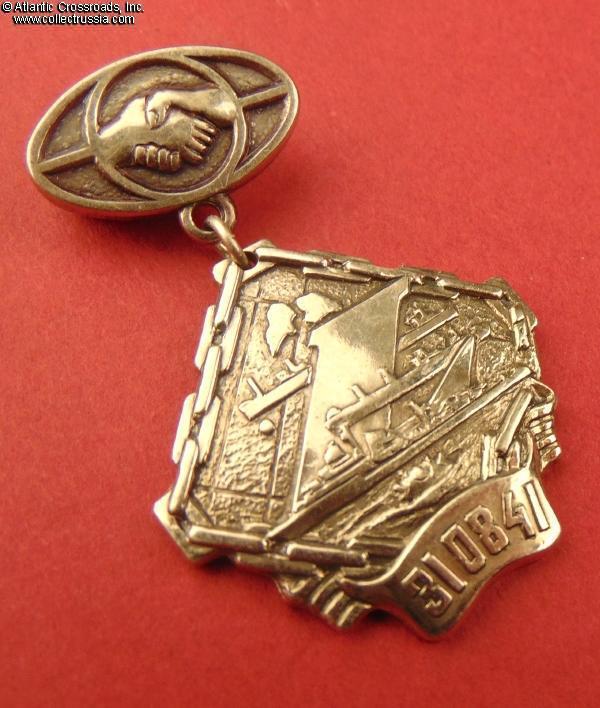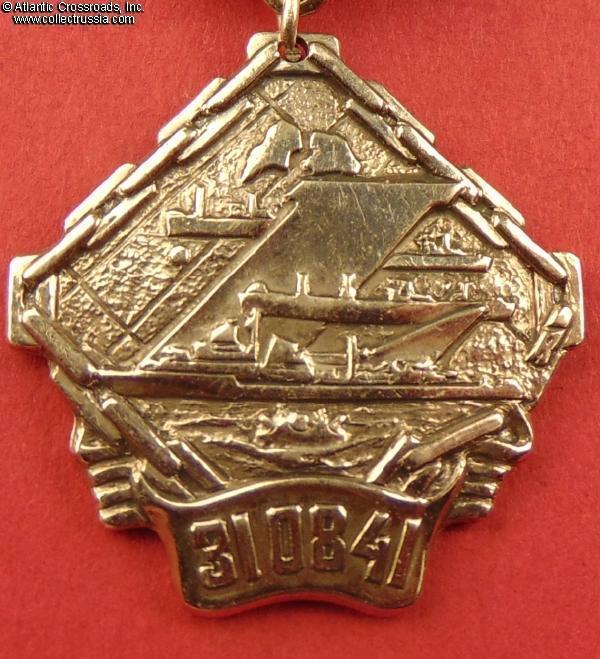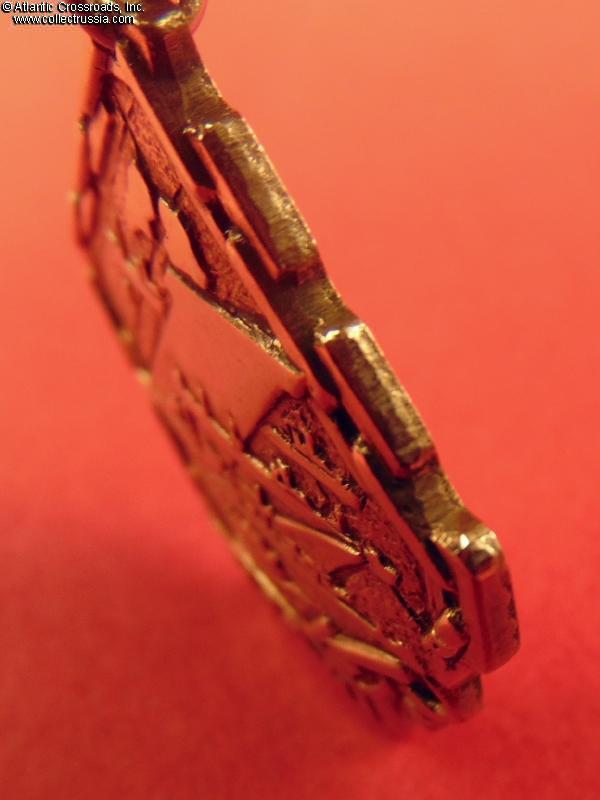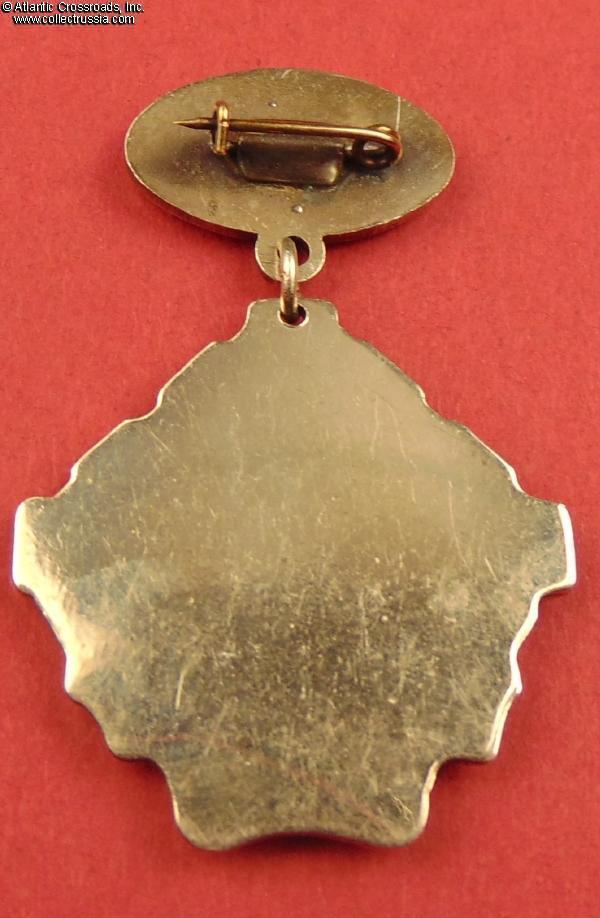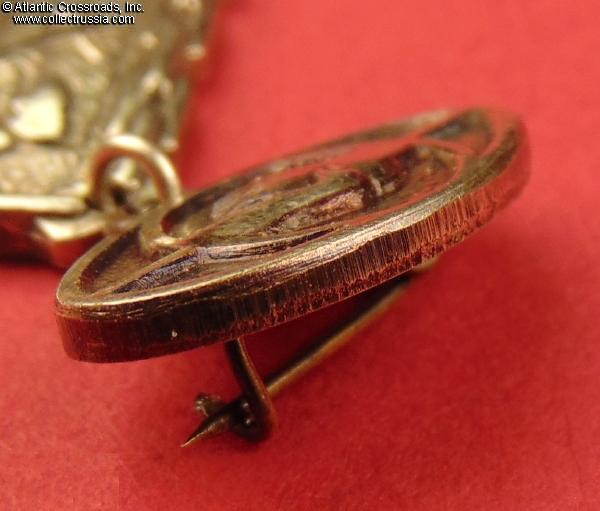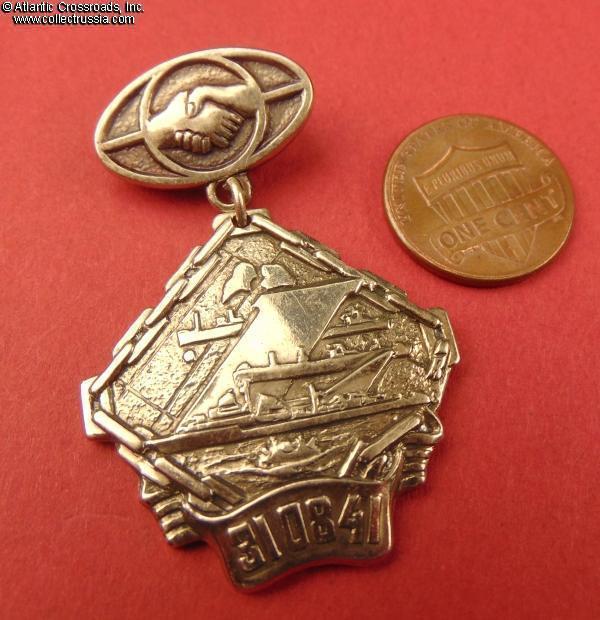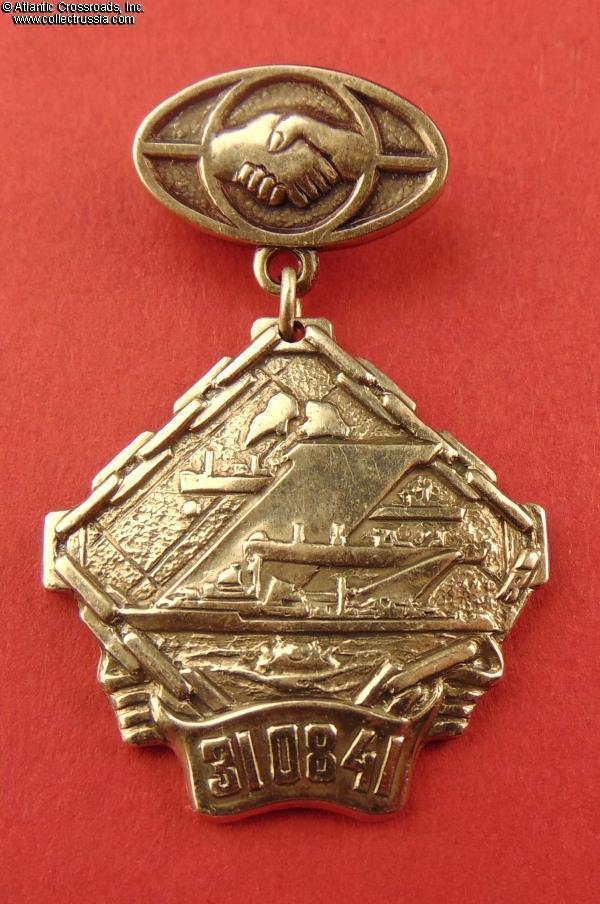
Badge of a Participant of the First Northern Convoy PQ-0 "Dervish" from Great Britain to the Soviet Port of Arkhangelsk in August 1941, issued in 1991 to one of the Soviet or British PQ-0 sailors.
In Melchior alloy (nickel silver); the pendant measures 33.6 mm in height incl. eyelet x 32.2 mm in width; overall height with suspension is approx. 49 mm; overall weight with suspension is 17.5 g. Shows the 31 August 1941 date of the arrival of the first British WW2 convoy to the Soviet northern port of Arkhangelsk. The suspension device is oval and shows a handshake, which like the date, is also a unique feature of the PQ-0 veteran's badge: the badges awarded to participants of all the other PQ convoys have a rectangular suspension with an inscription in either Russian or En
In Melchior alloy (nickel silver); the pendant measures 33.6 mm in height incl. eyelet x 32.2 mm in width; overall height with suspension is approx. 49 mm; overall weight with suspension is 17.5 g. Shows the 31 August 1941 date of the arrival of the first British WW2 convoy to the Soviet northern port of Arkhangelsk. The suspension device is oval and shows a handshake, which like the date, is also a unique feature of the PQ-0 veteran's badge: the badges awarded to participants of all the other PQ convoys have a rectangular suspension with an inscription in either Russian or English.
The badge is in excellent, near mint condition. The raised details are pristine, the finish is bright and spotless.
The PQ-0 was the first in the series of wartime PQ convoys that brought vital military and industrial supplies from the United States and Great Britain to the beleaguered Soviet Union. It comprised six British and one Dutch merchant ships (contrary to the later Russian assertions, there was no Soviet freighter in the first convoy), escorted by a number of British destroyers and minesweepers, with further protection provided by a special naval detachment which included an aircraft carrier, cruisers and destroyers. It is noteworthy that the PQ- 0 (codenamed "Operation Dervish") had sailed well before the American Lend-Lease program was extended to the Soviet Union. Two months after the German invasion of the USSR, British military help to the new Soviet ally was a matter of great urgency. The program was championed by the British Premier Winston Churchill even though the USSR until recently had been a de-facto ally of Nazi Germany (ever an anti-communist, Churchill famously remarked "If Hitler invaded hell I would make at least a favourable reference to the devil in the House of Commons."). The initial agreement on British assistance to the Soviet Union was signed in Moscow on 12 July, a few weeks before the first convoy left Liverpool.
It is worth mentioning that the importance of the Lend-Lease supplies to the USSR - lion's share of which at least initially was brought by the perilous northern route to Murmansk - was never fully revealed by Soviet propaganda and is still not clearly understood by the general public. Over 16% of all tanks in Soviet WW2 inventory came from the USA and Great Britain, as well as 13% of combat aircraft, more than half of trucks, and 100% of armored personnel carriers. Moreover, these weapons were often far superior in quality to their Soviet counterparts, and arrived at the time when the Soviet Union's losses in equipment were staggering and the recently evacuated factories were struggling to increase the output.
Perhaps of even larger importance were literally millions of tons of other valuable equipment, including industrial machinery that would produce vast amounts of ammunition and weapons throughout the war and beyond (little known fact for medal collectors: some of the high- quality stamping machinery used by the Soviet mint was delivered from the US around 1943-44, which was probably a decisive factor in the mint's ability to produce a large number of decorations in the last year of the war.) Contrary to popular belief, the Soviet Union almost certainly would have lost the war if not for the western help.
The badge to veteran sailors who participated in the northern convoys was conceived at one of their meetings that were traditionally held on 31 August, the day of the arrival of PQ-0 to Arkhangelsk. The first badge was designed by a local Arkhangelsk artist Kunnikov, himself a veteran of the WW2 convoys. Intended for participants of all northern convoys who attended the meetings, it had a rectangular suspension with a Russian-language inscription and the dates "1941-1945" at the bottom of the pendant. It initially appeared in 1972 with an additional quantity produced in the 80s. In 1991, a series of three similar badges were made to commemorate the 50th anniversary of the first convoy: one with the Russian inscription for Soviet sailors, one with the English text for the British and American ones, and one with the oval suspension featuring a handshake exclusively for the participants of the first convoy. Almost needless to say, because there were comparatively few sailors of the PQ-0 still alive in 1991, the "Dervish" badge is extremely scarce.
Please note, penny in our photo is for size reference.
$380.00 Add to cart

